The Jeep Wrangler has been retrofitted with modern creature comforts but still retains its old-school barbarian charm.
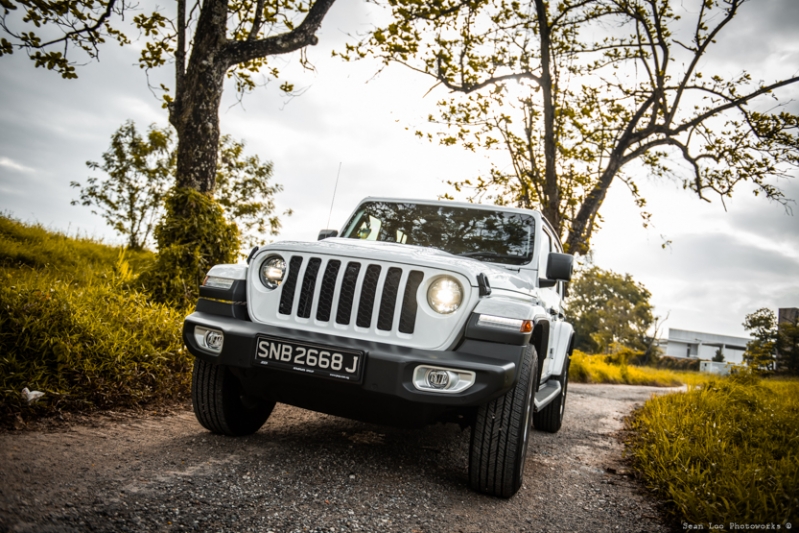
From its inception, the Jeep Wrangler has always had unique appeal going for it. It’s one of those iconic cars in automotive history that exudes a certain philosophy, and to this day it still refuses to bend its traditional formula in order to conform with the rest of the industry.
A dinosaur in our strange modern times, but one that a lot of like-minded enthusiasts can appreciate. So then, does this brute still have a place on our sterile roads?
Imposing looks and flexed muscles
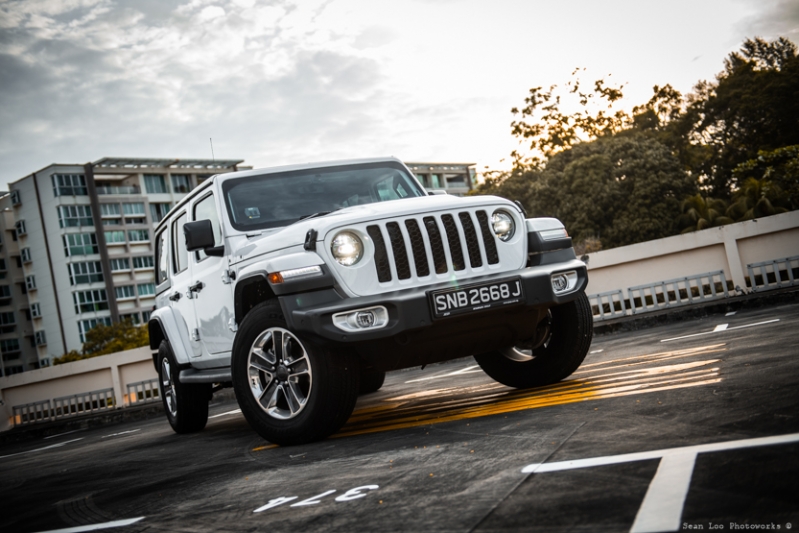
Inspired by the OG military Willys Jeeps that ferried allies during World War II, the Jeep Wrangler adorns a rugged, no-nonsense demeanour. Even with little to no additional attachments like jerry cans and floodlights, it’s still an imposing sight on the roads, fitting in worse than a fox in a hen house.
Being massive, you would need to unglamorously clamber into the cabin using the side steps.
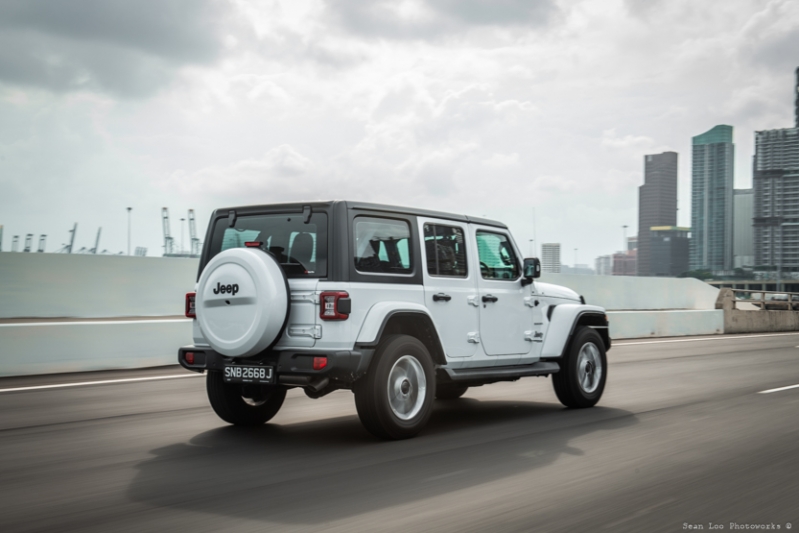
You will attract stares as you drive by, mostly due to the raised proportions and massive overhangs. In fact, while this looks normal in the States, everything feels supersized compared to our local econoboxes and compact crossovers.
There are two trim levels available: Sahara and Rubicon, either of which comes with either two doors or four. The Sahara, shown here, is more on-road based in terms of its specification and styling. The Rubicon on the other hand, with different black wheel arches, black roof panels and standard fit 17-inch wheels and knobbly tyres, is the more serious off-road sibling.
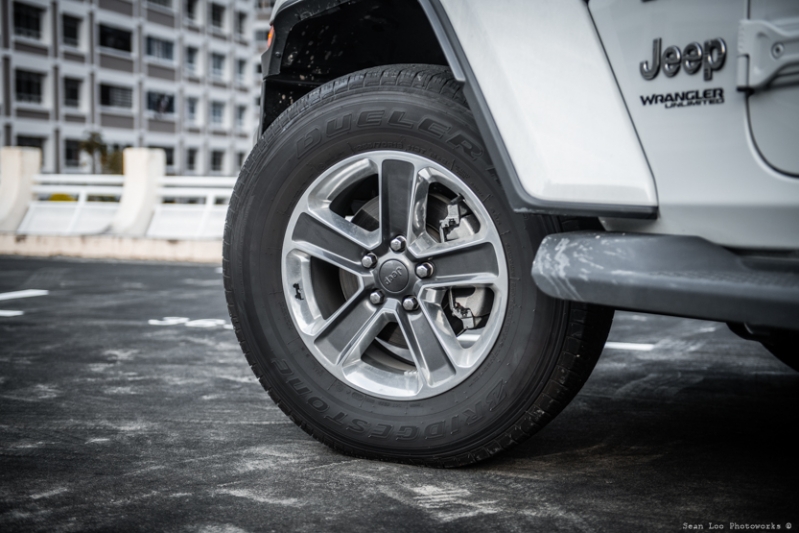
As large as these tyres seem to look, the Sahara trim wheels are only 18 inches in diameter. But, they are flanked by massive 70-profile treads, and this cushioning really benefits the Wrangler off-road.
Smorgasbord of eras
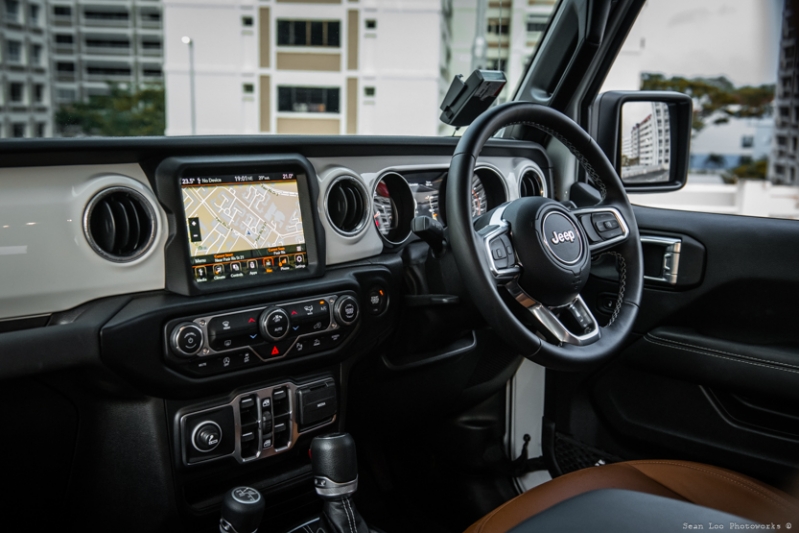
It’s not the most spacious or accommodating SUV available today by any stretch, but the Wrangler provides an interesting blend of vintage and modern Jeep character.
Seated close to the upright windshield, front occupants face a narrow squared-off dashboard punctuated by round air vents and chunky switches for the climate-control system, power windows, and infotainment. Every feature is a physical button, which may look outdated in today’s digitalised world, but I am all for it if it benefits usability.
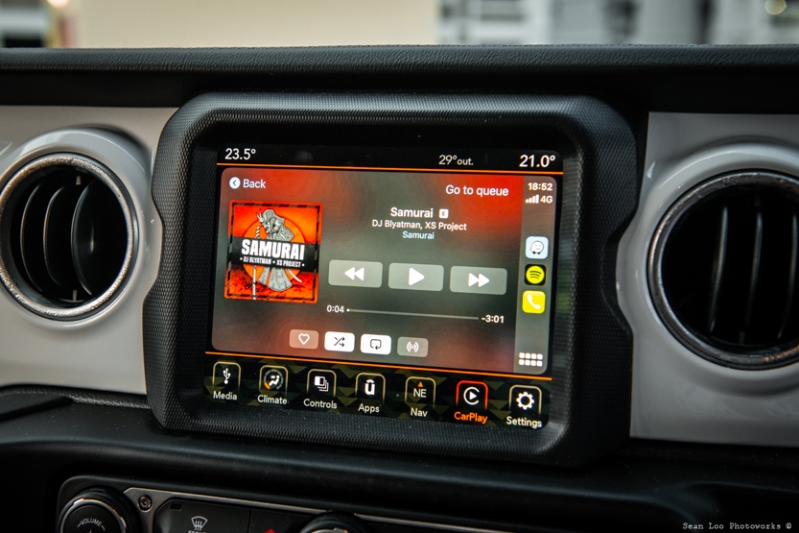
The Jeep Wrangler did get a tech upgrade back in 2019, bestowing the car with an 8.4-inch Uconnect infotainment touchscreen. It is decent to use, but the menus do feel a little confusing at times.
In-built navigation is handy in a pinch, and a 9-speaker Alpine speaker array can be optioned for tunes. Apple CarPlay and Android Auto are also available, albeit in wired form. The instrument cluster is a mix of analogue dials with a small TFT display in the middle, providing you with various assist menus.
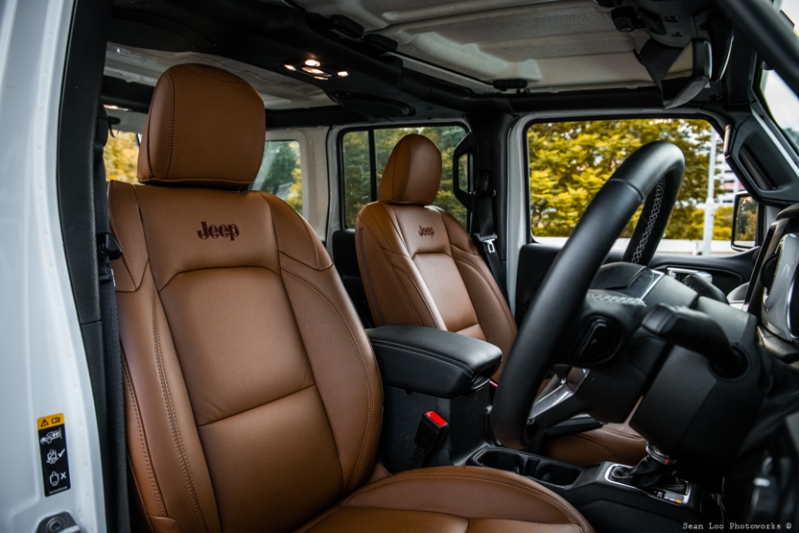
The materials that line the cabin are not what you call ‘plush’, but there’s a very good reason for this. Waterproofing is one of the Wrangler’s strong suits, and the cabin is designed to cope with any potential water ingress, either from the sky or from wading in deep bodies of water.
Undo some latches, and the roof can be taken completely off, exposing you and your occupants to the outside air. Heck, if you wanted even more fresh air you could pop the doors out if you wanted to, but that’s illegal in Singapore… so we’ll just keep them on.
Macho Ballet Dancer
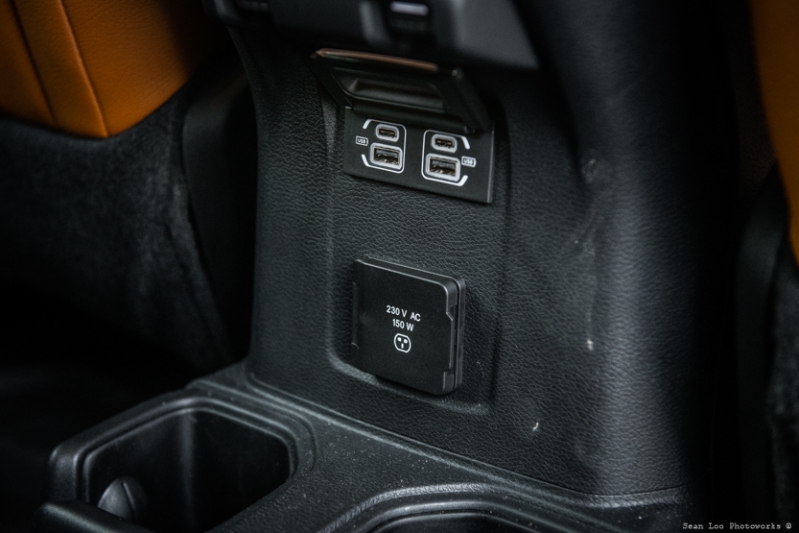
Utility is one selling point of the Wrangler, and 12V outlets are scattered throughout the length of the vehicle, which can power tools like auxiliary tyre pumps while off the beaten path. A standard wall socket is even included in the centre console, bestowing rear occupants with the flexibility of powering larger electronic devices. Although, the port appears to be native to the United States.
ISOfix points are available in the rear seats too, should you want to take junior on the scenic route to school in the morning.
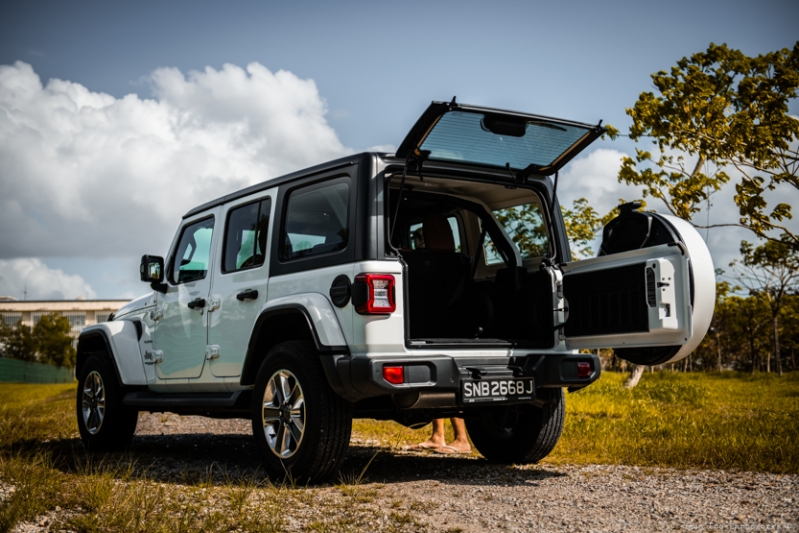
Cargo space is aplenty, and the Wrangler features a split tailgate. The lower half hinges open, and you can flip up the top half glass panel to expose the 897 litres at your disposal. There are mounting brackets too for attachments, and you even get a small cubby underneath the boot floor to store your spare roof bolts, in case you forgot where you last placed them. Just remember where you last stowed the roof, as the rear section has to be left behind whilst exploring.
A shallow basin with a drain plug is included under the boot floor, enabling tailgate parties with ice-cold refreshments. There are cubby holes everywhere in the Wrangler, and you can easily stow away items and hide them out of plain sight.
While the Wrangler isn’t the hardest thing to park in the world, extra care is required due to the long overhangs. The sensors and backup camera do a decent job of alerting any incoming obstacles, but relying on your large side mirrors should be a priority.
Once you do manage to squeeze into a lot, to the annoyance of your immediate neighbours, you start to realise just how massive the Wrangler really is. It dwarfs more or less anything else in the carpark or road, and other commuters are lucky if they can even catch a glimpse of your door handle.
A commanding view of the road (or trail) makes for easy manoeuvrability, but the view rearward is obscured by thick roof pillars, roll bars, and various grab handles.
Rock Climber
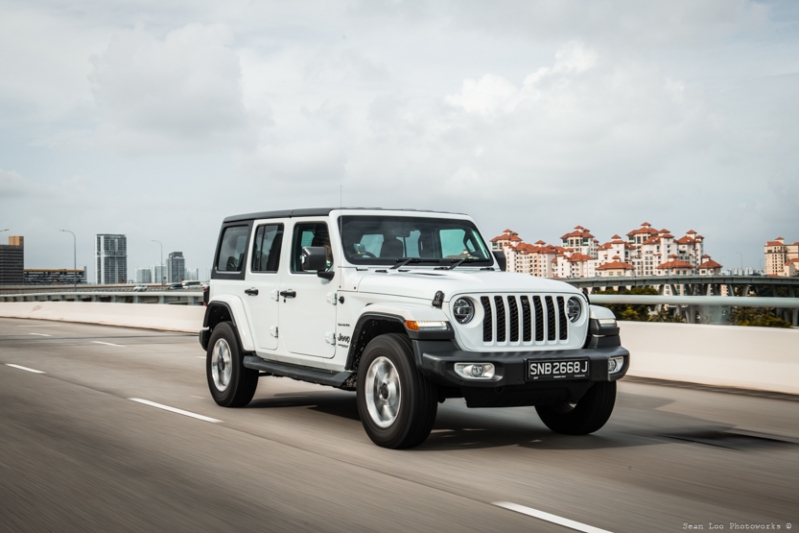
In a bid to appeal to the mass market, or to possibly evade stringent emissions criteria, the Jeep Wrangler is offered with a 2.0-litre turbo setup, dubbed the Hurricane. No Pentastar V6 or Hemi V8 I’m afraid. Still, the 2-litre porker can still push out 268 bhp and 400 Nm of torque. This is all sent to a selectable all-wheel drive drivetrain, delivered via an 8-speed automatic gearbox.
The selectable gearbox is great, allowing you to toggle between rear-wheel drive, all-wheel drive or low range. Perfect for any adverse terrain conditions. But, if you’re sticking to the tarmac, the Wrangler can achieve a top speed of 199km/h, and complete the century sprint in just 7.3 seconds. Pretty impressive figures for something that is less aerodynamic than a cow.
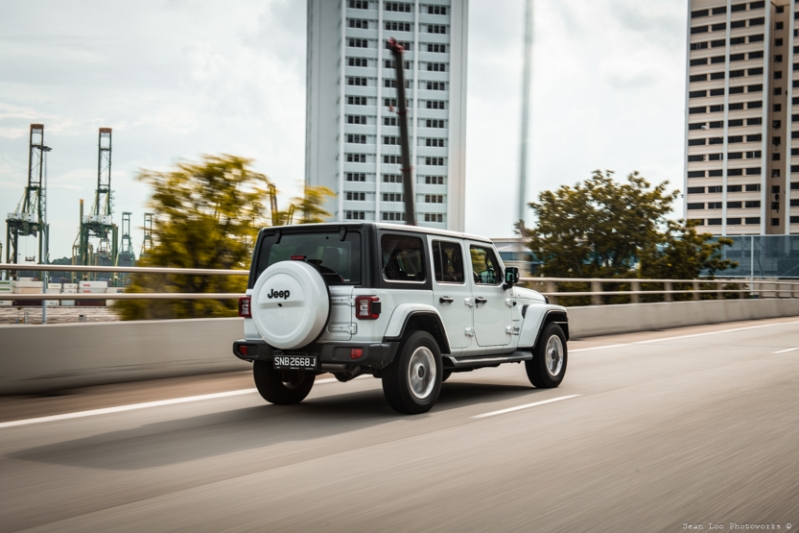
It does fairly well performance-wise, with enough grunt to help it move along at a decent pace despite the car’s weight. Even with some enthusiastic pedal pressing, it doesn’t feel strained or stretched when you get going.
Regardless, putting your foot down is not something you would want to do very often with the Wrangler, as driving it is pretty much like being at the helm of a truck. There’s quite a bit of vagueness in the steering, and you end up having to constantly correct yourself just to stay on the straight and narrow. This sensation is especially pronounced when you take it on the expressways.
Replace the tarmac with loose soil and gravel, and that’s where the Wrangler really shines. Being a dedicated off-roader, the Wrangler has the right suspension for any off-road endeavour. These heavy-duty gas shocks effortlessly iron out any undulations in the road, and even gravel tracks feel like smooth tarmac at speed. I could have possibly gone over a kerb or two, but I never felt anything out of place.
You get 269mm of front and 251mm of rear ground clearance, and the off-road geometry of the Wrangler is as follows: 41.8* approach, 21* break-over, and 36.1* departure. Sadly, there is no place in Singapore where we could fully test out the Wrangler’s true off-road capabilities.
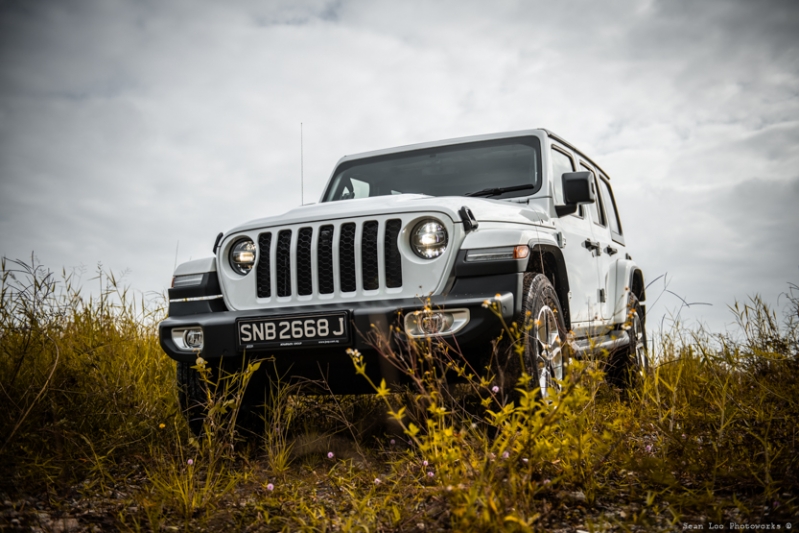
Even with its 2.0-litre mild hybrid powertrain, fuel economy is abysmal due to the sheer heft of the Wrangler. Even with a gargantuan 81.4-litre fuel tank, I was only getting around 450km on a theoretical full tank. Gently cruising along garnered me 8.8km/litre, but this quickly dwindled each time I had to apply power more enthusiastically. The fuel sensor in the car is also a little wonky, and it would oftentimes underestimate the amount of fuel remaining in the tank.
This induced ‘panic fuel station’ runs, which weren’t honestly necessary once the fuel gauge returned to normal operation. Get to know your regular fuel pump attendants though, as you would probably be seeing them more often in this thing.
It’s fairly obvious that the Wrangler is very much designed for extreme off-road use, with its massive ground clearance and suspension which can take on any sort of road imperfections. With more modern features tagging along, it makes those jungle-bashing adventures just that little bit more liveable and tolerable.
Taking the road less travelled
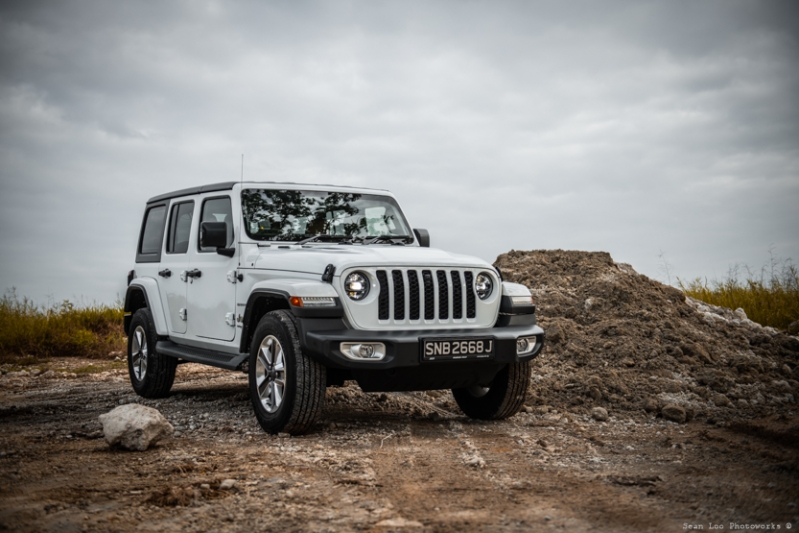
So, we have concluded that it looks bonkers, it has lacklustre fuel economy, and it’s not the best in creature comforts. But, do these ‘flaws’ convince you to part ways with the Jeep Wrangler and look somewhere else?
Of course not. When you buy the Wrangler, you know exactly what you’re in for. You don’t care about efficiency or a luxurious experience all that much. What you really care for, is the promise of adventure.
If you wanted a no-frills, no-nonsense off-roader, this is it. The quintessential dirt beater that can still be dressed for the town on one day, and outfitted to climb over rocks the next.
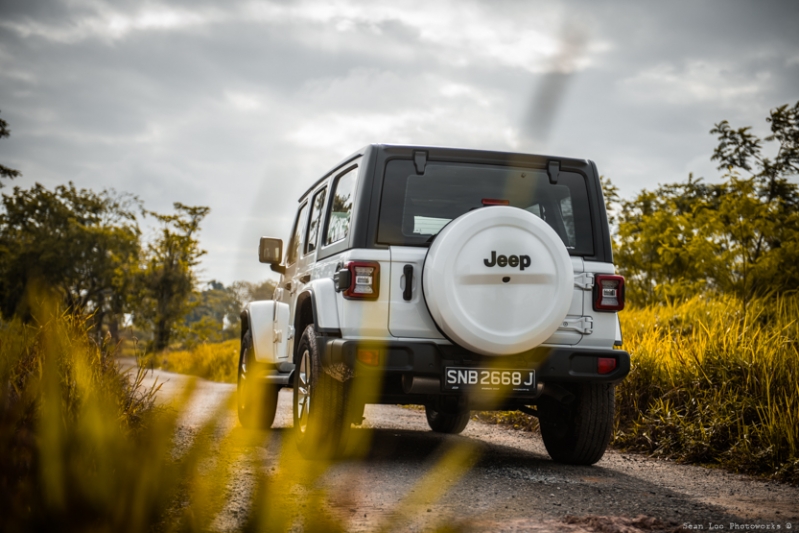
Every Wrangler is imbued with Jeep’s all-American heritage, and that sense of freedom is what you truly experience when driving it. Want to brave the rain? Take the roof off. Want a trusty companion to go camping with? She’s all loaded and ready. Want to go exploring? Ain’t no mountain high enough.
The Wrangler is designed specifically for two things. It can take you wherever you want to go, regardless of the terrain. And, it makes you feel special driving it.
This is exactly why I adore it.
Technical Specifications
Jeep Wrangler Sahara 4-DoorEngine: 1,995cc 4-cylinder in-line 16-valve Turbocharged Power: 268hp Torque: 400Nm Gearbox: 8-speed (A), All-wheel drive (Selectable) 0-100km/h: 7.3 seconds (claimed) Top Speed: 199km/h Fuel Economy: 11.6km/L (claimed)
Price: S$344,800 with COE (accurate at the time of this article)
Contact: Jeep Singapore
